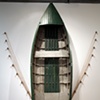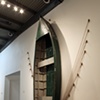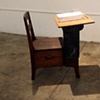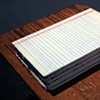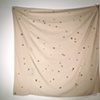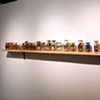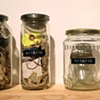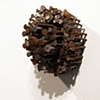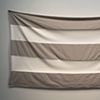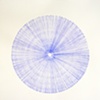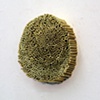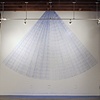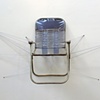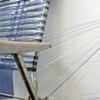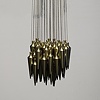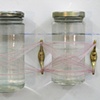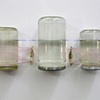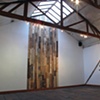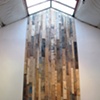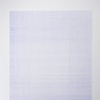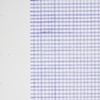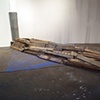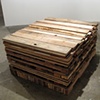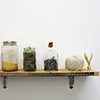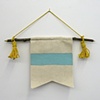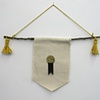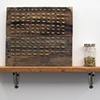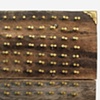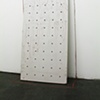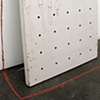
Recent Works
I consider my work to be a series of experiments toward allowing materials to create their own unexpected moments of beauty or poetry. My materials consist mostly of humble, salvaged, or readily available items that can be found in the home or in the hardware store. I consider their reuse in an art context as a sort of appropriation: an extension and re-imagination of an object’s use value beyond its originally intended purpose. Through the use of familiar objects—sticks, old jars, household hardware, weathered planks, house paint—I reference the aesthetics of garage tinkering and do-it-yourself construction. But through the misappropriation of these materials, using the wrong tools for a given job, and the imposition of systems of flawed logic for the creation of objects, I move out of the garage and into the realm of armchair mad science and backyard shamanism.
It is important to me that my materials dictate at least some of the parameters for the making of finished objects. The natural curvature of sticks, the warping of old boards, the behavior of accumulated paint, the tension of thread tending toward a straight line, and the natural leveling of water are some of the forces and rules that have complemented my ideas in the creation of pieces. In much of my work, I invent ways of using materials where the process of the construction of a piece is readily apparent and central to its meaning. The physical labor that goes into the work is appropriated as art labor, and is transformed. But it is also important to me that the finished object is more compelling than the act of its making. By giving the materials a voice in this way, I allow for a certain amount of uncertainty that brings a sense of mystery and wonder into the creation of the work.
I am also deeply interested in the current and obsolete systems of measurement and standardization that dictate the shapes and sizes of much of the built and manufactured landscape: past, present, and future. I seek to subvert and/or celebrate these systems in my work by manipulating them and presenting them in unexpected contexts.
It is important to me that my materials dictate at least some of the parameters for the making of finished objects. The natural curvature of sticks, the warping of old boards, the behavior of accumulated paint, the tension of thread tending toward a straight line, and the natural leveling of water are some of the forces and rules that have complemented my ideas in the creation of pieces. In much of my work, I invent ways of using materials where the process of the construction of a piece is readily apparent and central to its meaning. The physical labor that goes into the work is appropriated as art labor, and is transformed. But it is also important to me that the finished object is more compelling than the act of its making. By giving the materials a voice in this way, I allow for a certain amount of uncertainty that brings a sense of mystery and wonder into the creation of the work.
I am also deeply interested in the current and obsolete systems of measurement and standardization that dictate the shapes and sizes of much of the built and manufactured landscape: past, present, and future. I seek to subvert and/or celebrate these systems in my work by manipulating them and presenting them in unexpected contexts.





